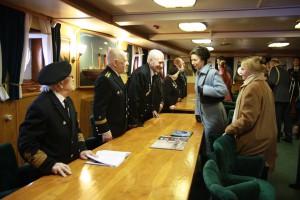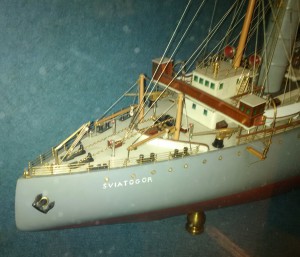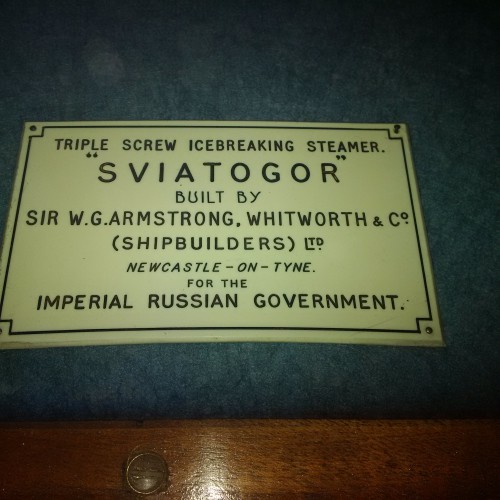3rd June 2015
A story of a British-built Russian icebreaker, who took part in the Arctic convoys

Guest post by Keith Allan, Consul General in St. Petersburg
The Russian ice-breaker, the Krasin, was built in Newcastle in 1916-17 and went on to play an important role in the Arctic Convoys of World War II. In this blog, Consul General Keith Allan talks about his recent visit to Newcastle University where a model of the Krasin is displayed in the Naval Architecture Department.
The Krasin is a fine example of shared British/Russian history. She was commissioned by Russia, built in Newcastle, and went on to play a significant role in the Arctic Convoys during World War II. For more on the Arctic Convoys, including the recent visit by British veterans, please see my earlier articles on the recent Arctic Convoys exhibition in St Petersberg and Sir Nicholas Soames’ message to St Petersburg Veterans.

The Krasin is now a floating museum on the Neva river in St Petersburg. I have visited her many times and we were honoured when HRH The Princess Royal visited the ship and met Russian veterans of the convoys during her visit to St Petersburg in February 2014.
I read an article about the ship which said there was a model in a glass case at Newcastle University, and decided I would seek it out during a future visit to the UK. This finally happened on 21 May when I was in Newcastle visiting a veterans association. Sure enough, an excellent model of the ship stands in a glass case in a corridor along with a number of others in the Department of Naval Architecture.

The plate on the case reads: ‘Triple screw icebreaking steamer ‘Sviatogor’ built by Sir W. G. Armstrong, Whitworth & Co. (Shipbuilders) Ltd. Newcastle-On-Tyne for the Imperial Russian Government.’
The ship was designed by the famous Russian seaman, Admiral Stepan Makarov, and was originally named after the Russian mythological warrior, ‘Sviatogor’. The Sviatogor sailed from Newcastle to Arkhangelsk on its maiden voyage in 1917 and was soon involved in the civil war hostilities following the October 1917 Revolution. During the allied intervention against the Bolsheviks in Northern Russia (1918–19) the ice-breaker was scuttled in the Dvina River. The Royal Navy raised her for use in the White Sea and later brought her back to the UK for minesweeping in Scapa Flow. She was returned to the USSR under the Krasin trade agreement in 1921. In 1927 the ice-breaker was renamed by the Soviet government to honour a recently deceased Bolshevik leader and Soviet diplomat Leonid Krasin.

The Krasin played an important role in the Arctic Convoys. In February 1942, the Krasin crossed the Atlantic (from the US) and reached Glasgow in early April. On 26 April 1942, she joined convoy PQ-15 and left Reykjavik for Murmansk. During the convoy Krasin shot down two German planes. Between 1942-1944 the ice-breaker continued to lead cargo convoys through ice in the Arctic despite heavy bombardment and the constant threat of submarine attacks. Many Allied ships and cargo vessels failed to reach their destination, but the Krasin was lucky enough to survive. In October 1945, the Krasin was disarmed. In addition to the convoys, the ship also participated in rescue expeditions in the Arctic in the 1920-30s, including one led by Umberto Nobile.
As a museum ship on the Neva river, the Krasin will continue to play an important role in reminding us of our shared British/Russian history and the heroic sacrifice made by British and Russian participants of the Arctic Convoys during World War II.
This is an amazing story about war heroes, many thanks for it.
Really interesting, I came across this piece of history by following the earlier British built Icebreaker Yermak from the same Newcastle yard amazed the UK had so much prestige in this particular field.